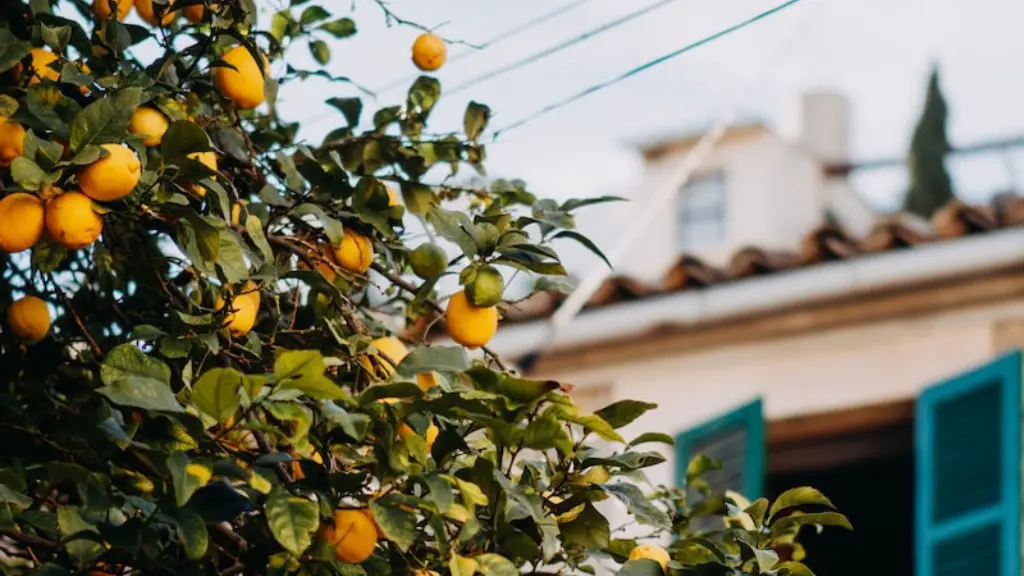Avocados are one of the healthiest fruits you can find in your grocery store. They are high in monounsaturated fats, which can help reduce cholesterol levels in your blood. They also contain a host of vitamins, minerals, and antioxidants. But how do you pick an avocado off a tree to get the most out of it?
The first step to picking avocados off a tree is to identify the ripe ones. An unripe avocado will be firm to the touch and will not have any give when you press it. A ripe avocado, however, will be soft to the touch and will give slightly when you press it. You’ll want to be careful not to pick too many avocados at once. A ripe avocado will often ripen quickly, so you’ll want to be sure to check the other avocados on the tree each day to ensure they’re not overripe.
The next step is to pick the avocado carefully. You’ll want to use something like a fruit picker to help ensure you don’t damage the fruit. Put the picker around the stem and twist it carefully. If the stem does not come off the tree easily, use a knife or scissors and cut the stem off. Then, use the picker to lift the avocado off the tree and place it in your basket.
Once you have picked the avocado from the tree, you’ll want to store it correctly. Ripe avocados should not be stored in the fridge or in direct sunlight. Place the avocados in a cool, dark place and check them every day to make sure they are ripening correctly. If they are overripe, you can still use them in recipes like guacamole.
The last step is to enjoy your avocado. You can eat them plain or in salads, sandwiches, and wraps. They are also a great addition to smoothies and make a delicious dip. The possibilities are endless!
Safety
It is important to be aware of the safety aspects to consider when picking avocados off the tree. It may be tempting to climb the tree, but it is always best to use a fruit picker to avoid injury. Be aware of the branch structure of the tree and the potential for falling branches. It is also important to check for wild animals that may be in the tree or on the ground.
If there are any sharp tools involved in the harvesting process, it is essential to take proper safety precautions. Wear protective clothing, be aware of your footing, and be sure to use sharp tools properly. Additionally, be sure to talk to the owner about any potential hazards before you begin picking.
Pruning
It is also important to prune your avocado trees on a regular basis. This will help to keep trees healthy, reduce risk of accidents, and promote a more efficient harvest. Pruning is done by carefully removing any diseased or weak branches, as well as any branches that are too low or too high. Pruning also helps to increase the size and amount of fruit the tree produces, making it easier to harvest.
Pruning should be done in the winter months, when the tree is dormant. Start by pruning any dead or diseased branches, then work your way to the higher ones. Be sure to cut back branches that are overhanging in a downward angle and prune away any crossed branches. Cut the branches at an angle, about a quarter inch from the main stem of the branch.
Fertilizing
Fertilizing your avocado tree is another way of ensuring its overall health. Fertilizing helps to replenish nutrients in the soil and improve the nutrient content in the fruit. Fertilize your tree early in the season with a balanced mix. An organic mixture of manure, compost, and other organic matter is best. You can also use a slow-release fertilizer for a more continuous supply of nutrients to the tree.
Fertilize again in the late summer months when the avocado trees start to produce fruit. This will help to increase the size and improve the flavor of the avocados. Be sure to follow the directions on the fertilizer package and water the tree after each application.
Pest Control
Finally, it is important to pay attention to pests that can potentially damage your avocado trees. In order to ward off these pests, use a combination of organic and chemical solutions. These can include traps, natural repellants, and pesticide sprays.
Organic solutions include introducing beneficial insects such as ladybugs and lacewings. These insects feed on destructive insects, such as aphids, and can help keep avocado trees safe from infestations. For chemical solutions, use pesticides that are approved for use on avocado trees. Be sure to follow the directions on the label carefully.
Harvesting Strategies
Harvesting avocados is a process that leaves room for improvement. Different strategies can be used depending on the location, quality of fruit desired and number of trees. If there is a high number of trees and multiple varieties, harvesting could follow a distinct schedule for each tree and variety depending on whether it’s intended for immediate sale or long-term storage. Inspecting the fruit regularly is necessary to check for skin damage and determine the optimal time of harvest.
For the trees with a high number of avocados, it’s best to utilize a mechanism to pick the fruit instead of relying on manual labor. This will allow for the fruits to be picked efficiently, without any damage to the skin, and ensure a quality product is delivered. Additionally, it’s important to think of ways to shift the load of picking fruit to different sections of the same tree. This will lead to a more efficient and even harvesting of the fruit.
When it comes to harvesting techniques, the use of pruning shears and clippers is recommended. These are especially useful when it comes to dealing with dense clusters of fruit. It’s recommended to avoid the use of poles and hooks to pick the fruit as this could potentially damage the branches and cause the tree to be weakened.
Storage
Once the avocados have been picked from the tree, it’s important to store them properly. It’s best to store avocados at temperatures between 44°F and 50°F with 55-60% humidity. Air flow is also essential for proper storage, as the ethylene gas produced by the avocadoes can easily cause them to ripen faster than one would expect. Any bruising or damage to the avocadoes should be avoided as this will reduce the shelf life of the fruit. Aim to store the avocadoes on regular intervals so they don’t stay in the same place for too long.
Storing in plastic produce bags can help to maintain moisture in the fruit and ensure that the fruit doesn’t dry out. It’s also important to monitor the storage of avocados regularly in order to check for any pests, disease or over-ripening. If any of these factors are present, the avocados should be removed and discarded.
Marketing
Once the avocados have been harvested and stored, it’s time to think about marketing them. This is a crucial step to ensure that the fruit reaches the consumers in order for it to be profitable. It’s important to have a strategy in place in order to determine who the target customers are and how to reach them. Depending on the type of outlet you’re targeting, the packaging can have a huge impact on the perception of the fruit.
Think about using compostable packaging or unique biodegradable material to display the avocados in stores. Organic labeling can also be beneficial to indicate that the avocados are grown without the use of pesticides or other chemicals. Through marketing strategies such as this, you’ll be able to ensure that your product reaches the right people.
Transportation
The last step in the avocado harvesting process is transportation. It’s important to consider the different modes of transportation that can be used in order to ensure that the fruit arrives in the best condition. It’s best to use a temperature-controlled truck to transport the avocados in order to ensure that the fruit remains at a safe temperature. Make sure to line the boxes of avocados with temperature-insulated materials to further protect them from the fluctuations in temperature.
It’s also important to take into account the geographical distance and any potential delays when transporting the avocados. It’s best to plan for a longer delivery time if the distances are great. Additionally, it’s best to avoid transporting the avocadoes when temperatures are extremely hot. These can all have a negative impact on the fruit and cause it to be unsuitable for sale.




